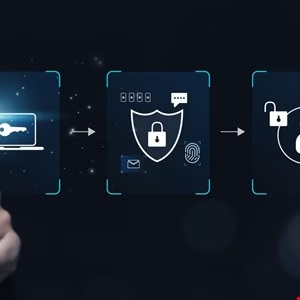Stop Cyber-Attacks with Simple IAM Controls

▼ Summary
– Simple gaps in process and identity management, not advanced malware, cause major breaches, as seen in attacks on UK retailers like Marks & Spencer and Co-op.
– Recent breaches resulted from social engineering, where attackers impersonated employees to trick IT staff into resetting passwords, bypassing technical defenses.
– The weakest link in cybersecurity is often human error and outdated processes, such as manual password resets relying on trust and human judgment.
– Implementing self-service password reset (SSPR) with multi-factor authentication (MFA) eliminates social engineering risks and improves security by removing human involvement.
– Modern identity solutions should enforce MFA, contextual risk-based authentication, and automated workflows to prevent breaches and reduce reliance on manual IT processes.
Cyber threats don’t always involve complex hacking techniques, sometimes, the simplest oversights lead to the most devastating breaches. Recent incidents involving major UK retailers demonstrate how basic identity management failures can expose organizations to significant risks. These weren’t cases of advanced cyberattacks but rather social engineering schemes where attackers impersonated employees to trick IT teams into resetting passwords.
The fallout? Unauthorized system access, operational chaos, and serious questions about why such fundamental security gaps existed.
The Hidden Vulnerability: People and Outdated Practices
Technology isn’t always the weakest link, human error and legacy processes often are. Take manual password resets, for example. Many organizations still rely on help desks to verify identities over the phone, a method that assumes trustworthiness in an era where impersonation is rampant. A convincing call is all it takes for attackers to bypass security entirely.
A Straightforward Solution: Automation and Multi-Factor Authentication
The fix isn’t complicated. Self-service password reset (SSPR) combined with multi-factor authentication (MFA) removes human error from the equation, drastically reducing social engineering risks.
Eliminates manipulation opportunities makes this approach works; Automated workflows remove the need for IT intervention, cutting off attackers’ access to vulnerable help desk processes.
Not all IAM solutions are created equal. To effectively counter social engineering, organizations should prioritize systems that offer Mandatory MFA for password resets.
Preventing the Next Breach
The breaches at Marks & Spencer and Co-op serve as stark reminders: many security incidents are avoidable with the right safeguards in place. Organizations often have the tools but fail to implement them effectively. By automating identity management and eliminating manual processes, businesses can significantly shrink their attack surface.
If your company still depends on manual password resets or lacks universal MFA adoption, the time to act is now. Your help desk shouldn’t double as a security vulnerability.
(Source: InfoSecurity)